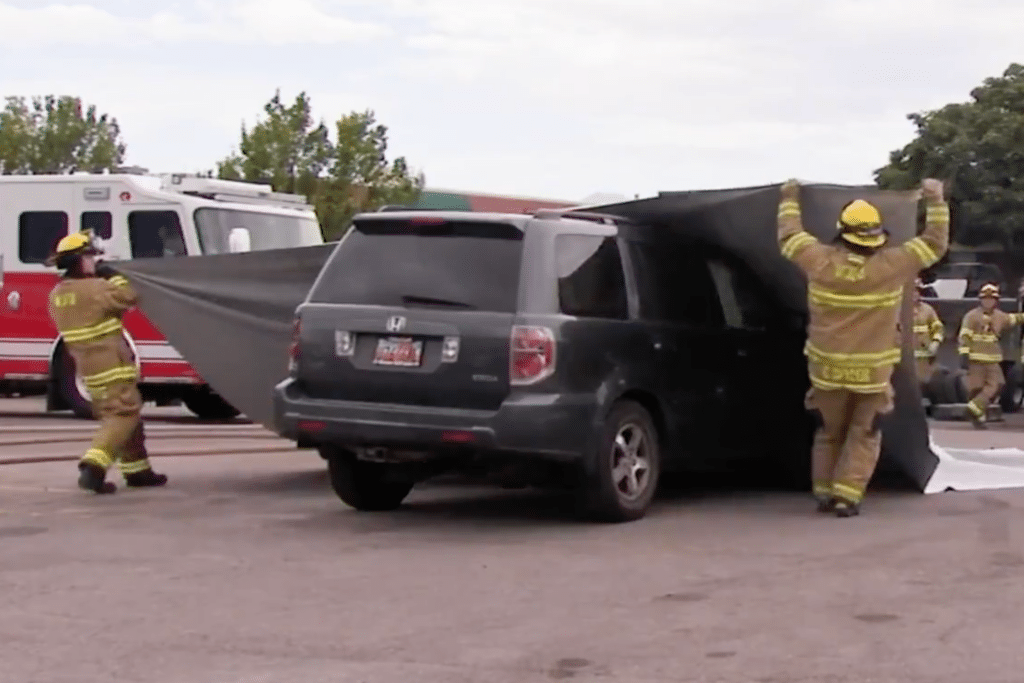West Jordan the first in Utah to test Electric Vehicle fire blankets
We didn’t start the fire, but we’re ready to put them out.
Electric vehicles (EV) are filling our roads and bringing new challenges for West Jordan firefighters. EVs are powered by lithium-ion batteries; traditional gas car batteries are lead-acid. While the EVs put less fumes into the air, they have their own environmental concerns. When an EV battery catches fire, there are toxic chemicals that burn into the air, and drain into the water system.
Owen Nuttall, Firefighter paramedic and member of the HAZMAT management team for West Jordan Fire Department conducted a training for the West Jordan firefighters. The department is exploring ways to contain EV battery fires and make them less dangerous.
Everyfirefighter in West Jordan has been practicing with new fire blankets to better control the EV burns. The blankets are made of fibrous glass and can bring the temperature of the fire down from 2000℉ to 300 to 400℉. The blanket is a one-time use – once it covers a car, it stays with the car.

“As far as we know, we are the first fire department in Utah to use one of the blankets,” Nuttall said.
Why are EV fires so dangerous?
“Lithium-ion batteries create their own oxygen,” Nuttall said. “You can dump 4,000 to 5,000 gallons of water on these vehicles and it doesn’t bring the temperature down.”
Using water to put out the fire creates another problem, even if it was enough to put it out. The batteries are full of chemicals that are really difficult to clean out of the water. If there’s an EV fire put out by water, the fire department needs to contact the County who then reaches out to the water districts to tell them to look out for contaminated water coming through their system.
But even after the use of the blanket, the problem isn’t solved. EV batteries can continue to burn for weeks, even months. WJ Fire is exploring other ways to reduce the risk of a battery reigniting in the future.
Other ways to control the burn is to submerge the whole vehicle in a tank of water, or bury it in the dirt for as long as it takes for the battery to run out of its own fuel.
For now, EVs that have caught fire are put into empty lots with at least 10 feet of space on all sides to prevent it from causing a larger fire.
While the fire department explores ways to best help residents in trouble with their EVs, individuals can help themselves by practicing getting out of their EV with the manual door openers when the electricity fails. This will protect you from the dangerous fumes and leaking chemicals.


